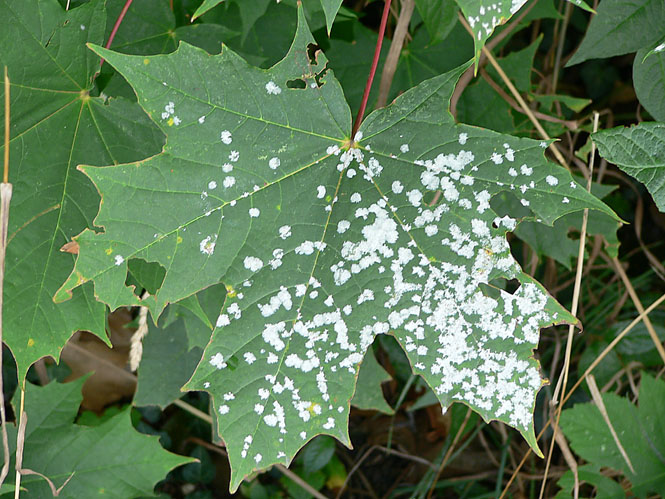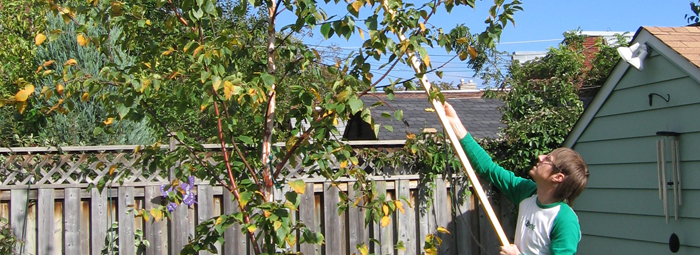If you are a proud owner of a beautiful lilac tree, this is probably something you deal with on an annual basis. Powdery mildew also tends to affect Norway maples year after year. It may not be pretty to look at (almost as if your plant was raided by talcum powder-wielding teenagers), but thankfully it doesn’t cause too much damage.
There are a variety of different powdery mildew fungi – each one host-specific, so the powdery mildew living on your lilac won’t be the same strain as the one happily hanging around on your Norway maple. Once the fungus has found a compatible host, it sends little roots (actually called haustoria) into the upper cells of the leaf to start the feeding process.

Powdery mildew is typically found when the humidity is above 90%, which for many of us means most of the summer (thank you Southern Ontario). The infection doesn’t actually occur when it’s raining, or when the garden is being watered by a sprinkler, as the fungus cannot set up its takeover on a wet surface.
But at the same time, aerial watering does increase the humidity in your garden which can lead to infection once the leaf surface has dried off a bit. Solution: avoid watering with a sprinkler when it’s hot outside. As an alternative, try slow drip watering with a hose at the base of your plants or investing in a soaker hose. The humidity in your garden can also be high due to crowding or overgrowth. (Norway maples tend to have very dense leaf canopies and that’s why they are so prone to powdery mildew.) If this is the case, lightly pruning some of your plants to allow a bit more sun and breeze to get to the remaining leaves will help. Should you need to prune a densely-growing tree, have an ISA certified arborist come in to do the job properly.

If your plants are already affected, the easiest and most effective way to avoid reinfection next year is not to let leaves (with mildew on them) lie. Remove them as soon as possible and make sure to dispose of them with your City’s composting programs - your home compost likely will not produce the heat needed to kill off the culprit. There are also natural neem oil options to help rid your plants of this pesky problem.

In the end, powdery mildew is more annoying and unsightly than it is harmful, and the species of trees that LEAF plants are less likely to become infected than the non-native ones mentioned. And if you do have a mildew-y lilac, you don’t have to worry about it spreading to your sugar maple, dogwood or other native tree. Following LEAF’s watering and care guidelines will reduce the chance of infection even more. Take the steps to stop powdery mildew it in its tracks!
